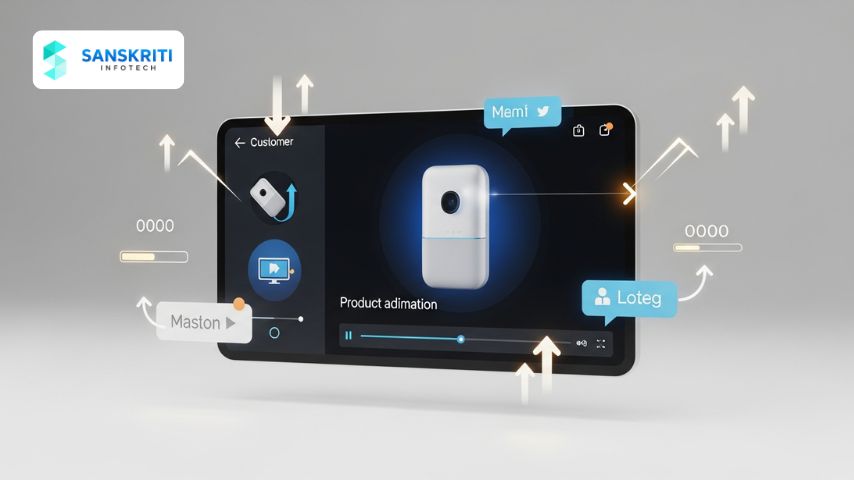Table of Contents
Introduction
In today’s high-risk industries, safety compliance is non-negotiable. But what if we told you that ticking regulatory boxes isn’t enough to prevent accidents? Organizations that thrive in hazardous sectors—from construction to manufacturing and oil & gas—don’t just meet safety requirements, they embed safety into their culture. And the catalyst for this shift? 3D safety training videos that go far beyond compliance.
This blog explores how 3D animated safety training is transforming how companies train, engage, and empower their workforce to create a truly safety-first culture.
Why Compliance Isn’t Enough
Regulatory training is often:
- Conducted annually
- Focused on checklists
- Delivered through PDFs or monotonous lectures
- Forgotten within weeks
A study by the National Safety Council (NSC) shows that compliance-only training reduces incident risk by only 20%, while behavior-based and culture-led training can reduce incidents by 60% or more.
So, while compliance may help you pass audits, it won’t guarantee that employees:
- Know what to do in an emergency
- Act safely under pressure
- Internalize safety as a personal responsibility
What Is a Safety-First Culture?
A safety-first culture means:
- Safety is valued as much as productivity
- Every employee—from C-suite to contract labor—prioritizes safe behavior
- Near misses are reported without fear
- Training is continuous and engaging
- Visual memory of risks and protocols is ingrained
It’s not a one-time training initiative—it’s a mindset shift across the organization.
How 3D Training Enhances Engagement & Retention
Traditional training methods have low retention rates:
- Reading-based: 10% retention
- Lecture-based: 20%
- Visual-based (3D animation): up to 80%
3D animated safety videos:
- Visually replicate hazardous conditions
- Demonstrate correct vs. incorrect behavior
- Include cause-effect simulations (e.g., what happens if you skip a step)
- Work well across literacy levels and languages
- Tap into visual and spatial learning—improving retention dramatically
Key Benefits of 3D Safety Training Videos
- Immersive Realism – Simulate your actual site, machinery, and scenarios.
- Standardized Delivery – Train every employee the same way—every time.
- Faster Onboarding – Reduce onboarding time by up to 60%.
- Better Compliance Metrics – Visual SOPs help reinforce regulatory behavior (OSHA Safety Training Standards).
- Improved Safety Culture – Empowers employees to take responsibility for their own safety.
- Fewer Incidents – Behavior-based visuals lead to real-world behavioral change.
- Data-Driven Feedback – Assessments linked to LMS systems can track performance.
Real-World Use Cases by Industry
Oil & Gas
- Emergency response animations for blowout, fire, and toxic leaks.
- Permit-to-work animated SOPs
Construction
- Working-at-height scenario simulations
- Scaffolding and crane operation visuals
Pharma & Chemicals
- Cleanroom behavior
- PPE use and contamination procedures
Utilities & Energy
- Substation hazards
- Lockout/Tagout (LOTO) procedures
Logistics & Warehousing
- Forklift safety
- Pedestrian zone awareness
How to Create Impactful 3D Safety Videos
- Step 1: Identify High-Risk Activities – Start with areas with high incident frequency or complexity.
- Step 2: Collaborate with Safety Experts – SOP + visual script = highly effective content.
- Step 3: Use Site-Specific 3D Modeling – Include your facility layout, machines, uniforms, etc.
- Step 4: Animate Real Scenarios – Include mistakes, their consequences, and corrective behavior.
- Step 5: Integrate with LMS or QR Codes – Deliver training onsite or online with tracking (SCORM and LMS Integration).
Building a Culture of Accountability with Visual Training
A powerful training video doesn’t just inform—it transforms. With:
- Repeated exposure to real incidents visually simulated
- Behavior-based reinforcement
- Culturally relevant storytelling
- Multi-language support
…3D videos create emotional ownership of safety behavior.
Employees no longer just “follow rules” — they live them. If you’re exploring tech-powered training approaches, check out our Custom AI Solutions.






